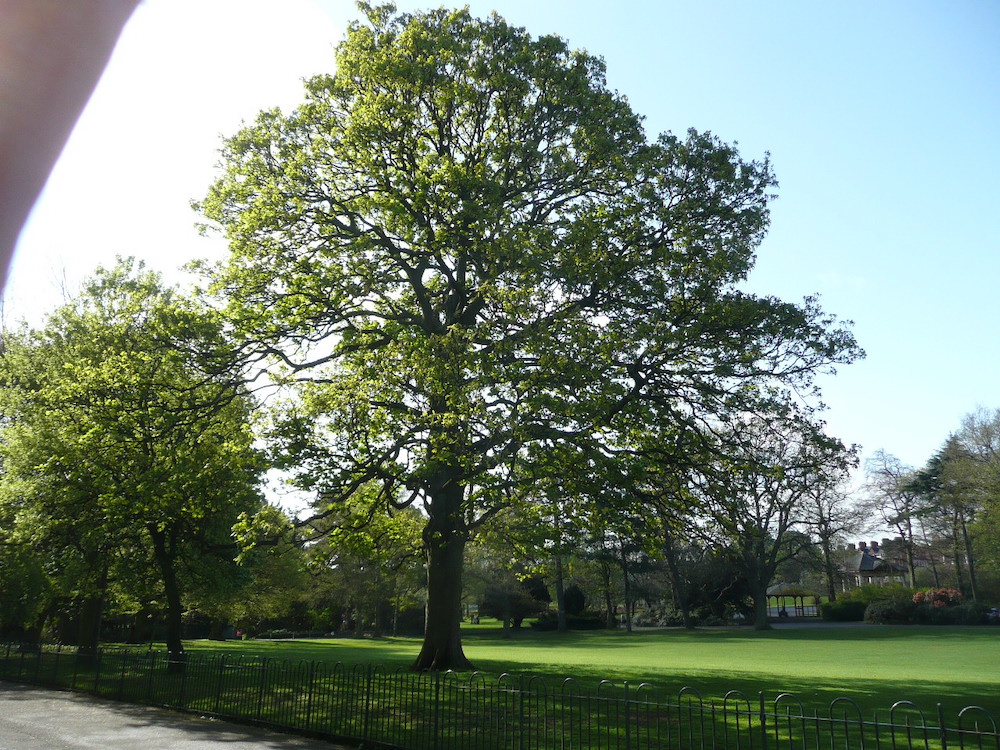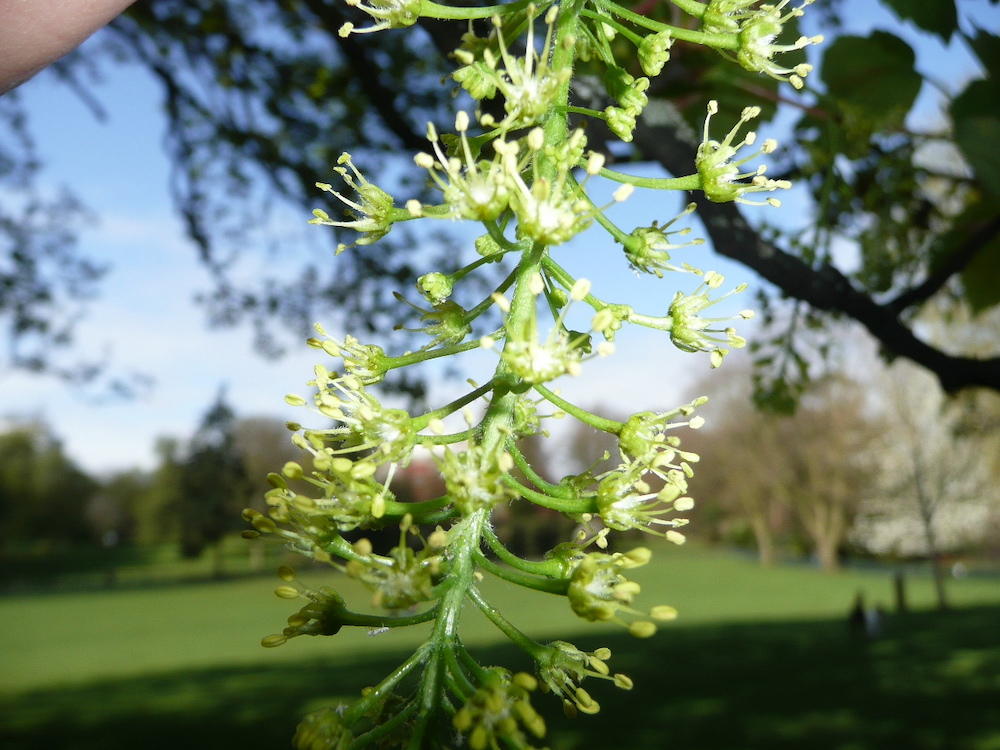Acer pseudoplatanus L.
Sycamore (European Sycamore in USA)
The tree tag number relates to the black tree-maintenance tags, usually fixed on the trunk, 2 to 3m above ground level.
The sycamore has become one of the commonest trees in Ireland and much of the UK, but is not native to this area. It is native to Southern Europe from Spain to the Carpathians. It is a prolific seed producer and spreads rapidly, thus it has become a serious weed species in many areas of the world including New Zealand and parts of the USA. It can invade deciduous woodland where its heavy leaf litter destroys herbaceous ground flora. Equally, it can invade fragile sand-dune habitats and shade out the native flora. On the other hand, it is very tolerant of salt spray so makes a good windbreak for seaside plantings.
The sycamore (known as sycamore maple or European sycamore in the USA) is a member of the maple genus Acer and has similar samaras or paired winged seeds to other maples. The flowers, and hence the samaras, are produced in racemes (see photo below), an attractive feature. Sycamore flowers have stamens that are longer than the petals giving the flowers a rather spiky appearance. This characteristic is useful in distinguishing the sycamore from Norway maple whose flowers have much more distinctive petals. Sycamore leaves are 5-lobed and toothed, usually with three principal lobes and two lesser lobes. They are almost invariably attacked by a parasitic fungus known as tar spot (Rhytisma acerinum). This produces black discs on the leaves that, while unsightly, cause little serious damage to the tree. The tar spot can attack other maples but seldom as seriously as on sycamore. In fact the presence of tar spot on the leaves is another feature that helps to distinguish sycamore from the otherwise rather similar Norway maple. Sycamore does not normally produce the attractive autumn colours characteristic of the Norway maple.
The Belfast Botanic Gardens has a number of specimens, arguably more than it needs. It is likely that at least some of these trees resulted from chance seedlings that have been left to grow on. A mature, free-standing sycamore is a splendid tree, but too many of them in the context of a botanic gardens could be classed as weeds. A careful selective cull might free up space for more interesting and varied planting




Photos taken in Belfast Botanic Gardens. Copyright: Friends of Belfast Botanic Gardens.
